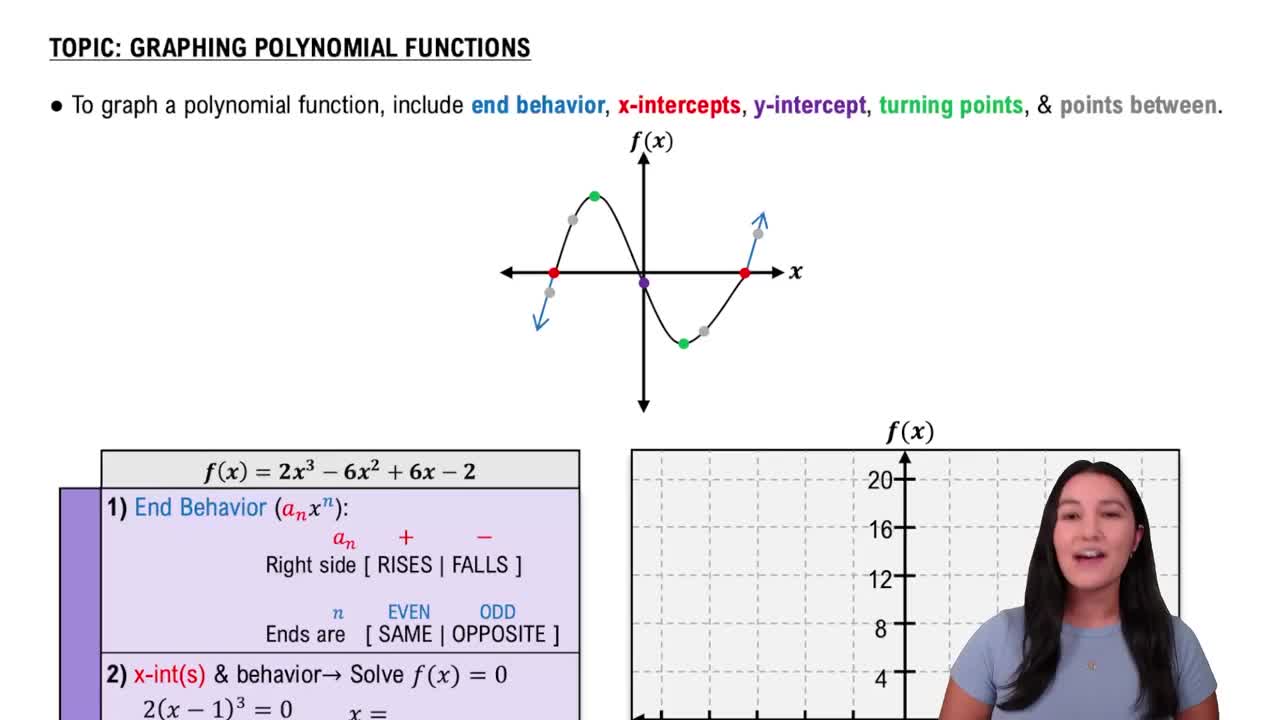Here are the essential concepts you must grasp in order to answer the question correctly.
Graph of the Cube Root Function
The function ƒ(x) = ∛x represents the cube root of x, which is a continuous and increasing function for all real numbers. Its graph passes through the origin (0,0) and has a characteristic shape that flattens out as x approaches both positive and negative infinity. Understanding this graph is essential for identifying its behavior and properties.
Recommended video:
Graphing Polynomial Functions
Increasing and Decreasing Functions
A function is considered increasing on an interval if, for any two points x1 and x2 in that interval, if x1 < x2 then ƒ(x1) < ƒ(x2). Conversely, a function is decreasing if ƒ(x1) > ƒ(x2) for x1 < x2. Analyzing the intervals of increase and decrease helps in understanding the overall behavior of the function.
Recommended video:
Maximum Turning Points of a Polynomial Function
Open Intervals
An open interval (a, b) includes all numbers between a and b but does not include the endpoints a and b themselves. In the context of functions, identifying open intervals where a function is increasing or decreasing is crucial for understanding its behavior over specific ranges. This concept is fundamental in calculus and algebra for analyzing function behavior.
Recommended video:
 Verified step by step guidance
Verified step by step guidance Verified video answer for a similar problem:
Verified video answer for a similar problem:



 5:2m
5:2m